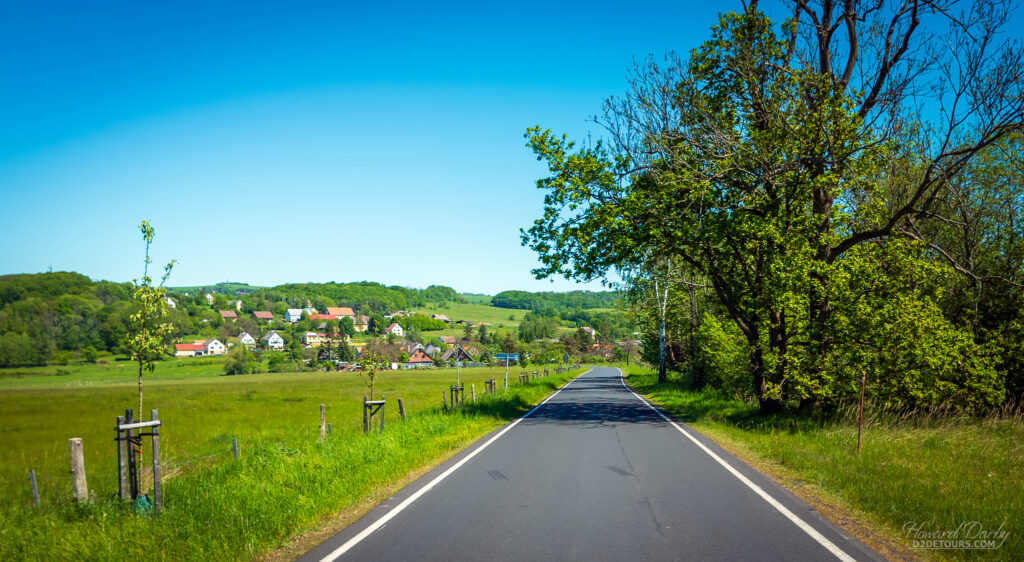
En route from Vienna to Amsterdam, we stopped for a few days in the central European country of Czechia, or as it is better known in English, the Czech Republic. However, well before either of those names became part of our lexicon, it was known as Bohemia. The Duchy of Bohemia was founded in the late 9th century. For nearly 600 years it was an independent kingdom within the Holy Roman Empire before being absorbed into the Habsburg monarchy – notwithstanding significant opposition from the local inhabitants. Although it was considered a part of the Austrian Empire, in WWI the Bohemians threw what support they could behind the allied forces and in 1918, following the collapse of the Habsburg dynasty, it became the independent republic of Czechoslovakia.
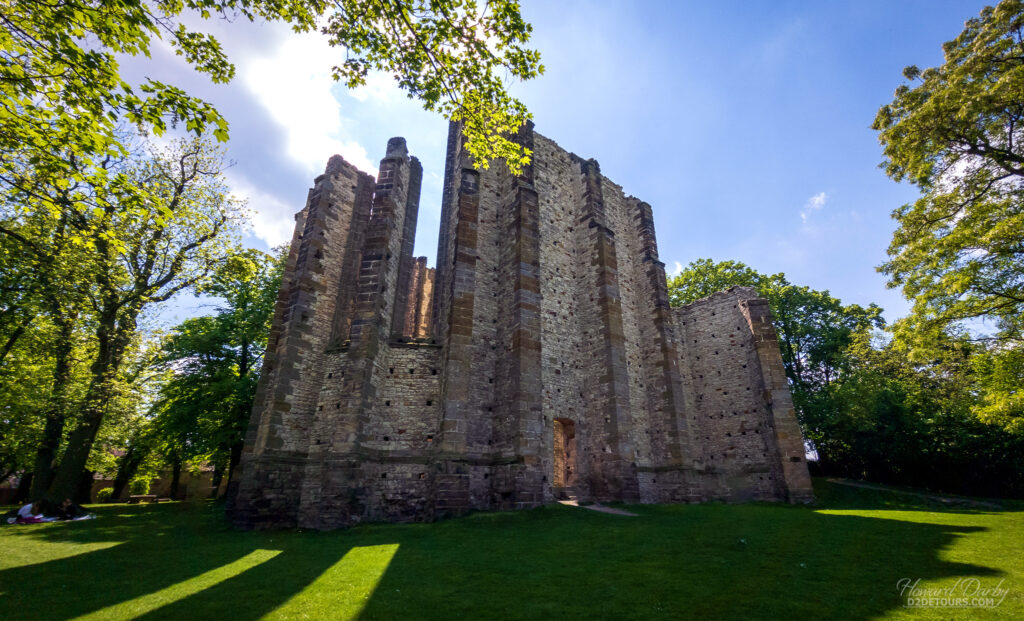
The peace achieved at the end of WWI didn’t last long, nor did Czechoslovakia’s autonomy. In 1938 the Munich Agreement gave much of western Czechoslovakia to Hitler as an acknowledgement that most of that population consisted of ethnic Germans. Just five months later Hitler violated the agreement with a full-scale invasion and occupation of the remaining territory. The consequences were devastating. A huge number of Czechs were “relocated” to create more living space for the Aryan nation. Able-bodied men were sent to labour camps, women and young children were resettled in Poland, and many were simply exterminated. German occupation ended with the arrival of Soviet and American troops in May 1945. During the 1946 elections, the Communist Party garnered 38% of the vote to become the largest party in the Czechoslovak parliament. For the next forty-odd years the country was a communist state until 1989 when revolution rocked much of the Eastern Bloc. Czechoslovakia emerged from the fallout as a liberal democracy once again. In 1992, the country amicably separated into the independent states of Czechia and Slovakia. The Czech Republic (Czechia) has been a member of NATO since 1999 and part of the European Union since 2004.
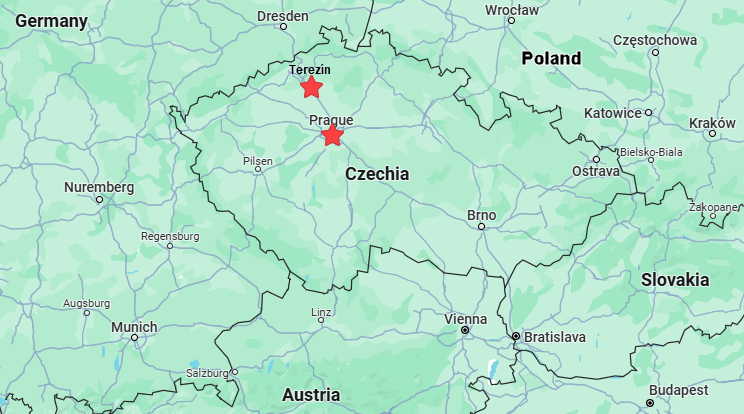
Initially, we had planned to spend three days in Prague only to discover that the IIHF Ice Hockey World Championships were being held in the city during the same time-frame. Accommodation prices were insane – a bed in a hostel dorm was $250 CAD/night! That turned out to be a blessing in disguise as we opted to rent a car and look for an Airbnb further afield. We settled on Terezin, about an hour’s drive north of Prague. The Czech countryside is beautiful, especially in springtime. Small pockets of settlements dot the brilliant green landscape, and we quickly made the decision that a return visit to this country was necessary.
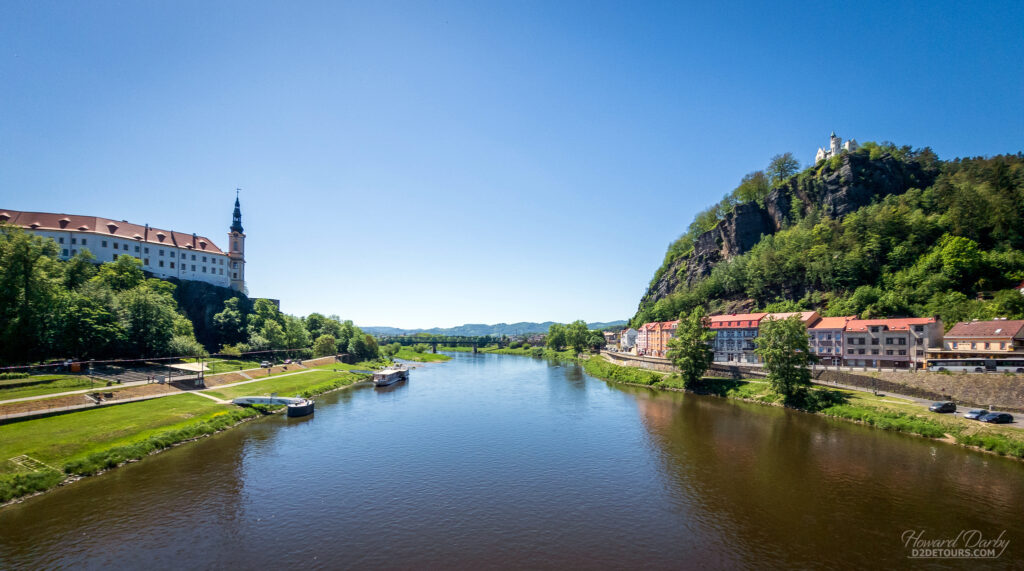
The small town of Terezin (pop. 2900) where we based ourselves began life as a fortress. Between 1780 and 1790, the Habsburg Emperor Joseph II oversaw the construction of a fortified complex intended to protect the heart of Bohemia from Prussian aggression. He named it in honour of his mother, Marie Terezie. As a defensive structure the complex never was called into action, but by the beginning of the 19th century the small fortress within the complex had gained new life as a jail, housing opponents of the Habsburgs. During WWII the small fortress would again serve as a prison, this time operated by the Prague Gestapo, and the main fortress (which is now Terezin proper) became a Jewish ghetto.
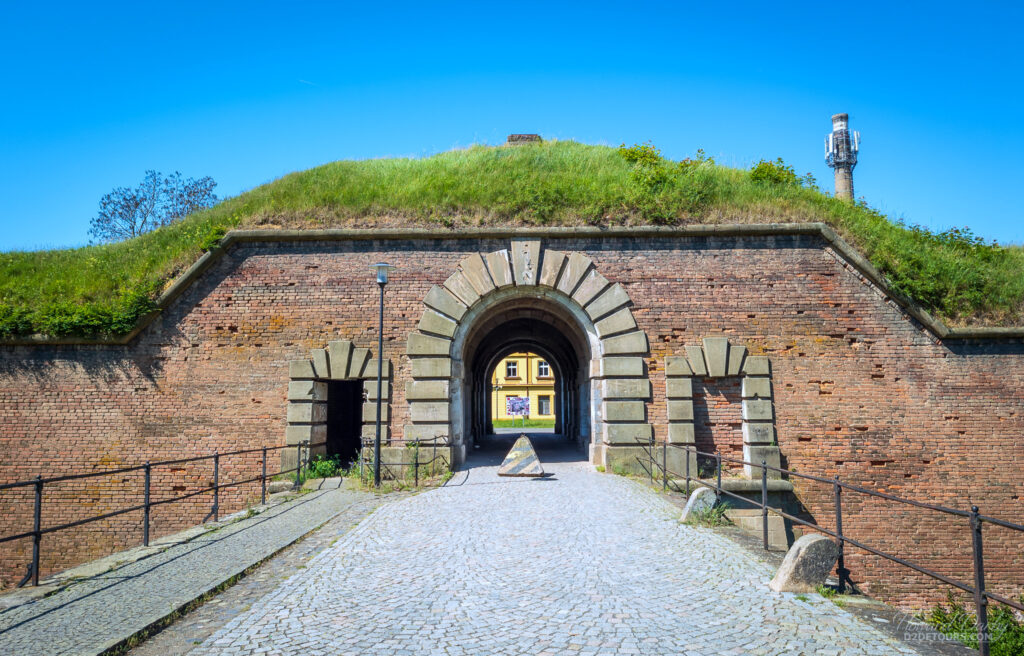
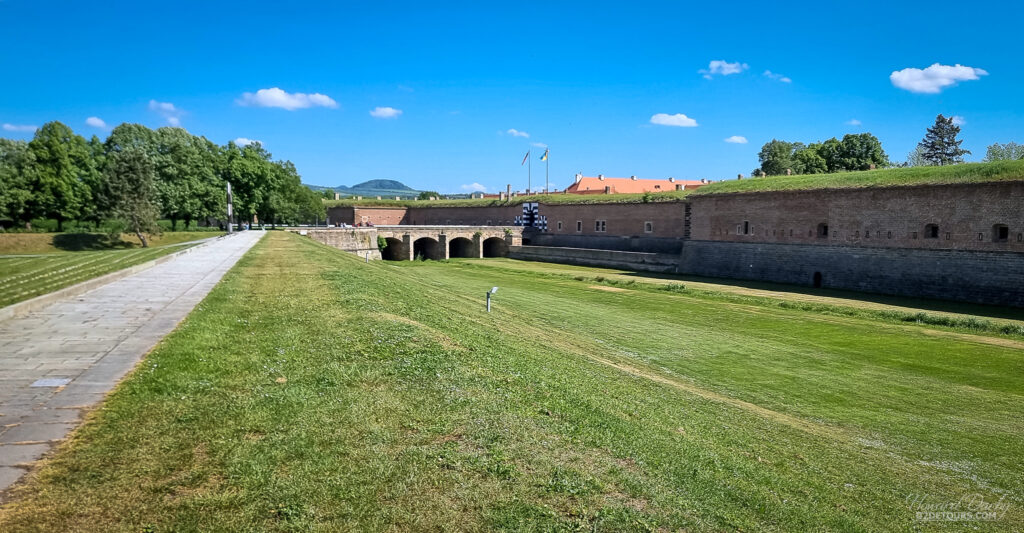
While the entire complex was deemed a “concentration” camp rather than an “extermination” camp, thousands of its prisoners perished in the deplorable conditions. Of the more than 150,000 German, Austrian, Dutch, and Danish Jews sent to Terezin only 17,247 survived to see the end of the war. Interestingly, for three years following the war Terezin was an internment camp for Germans.
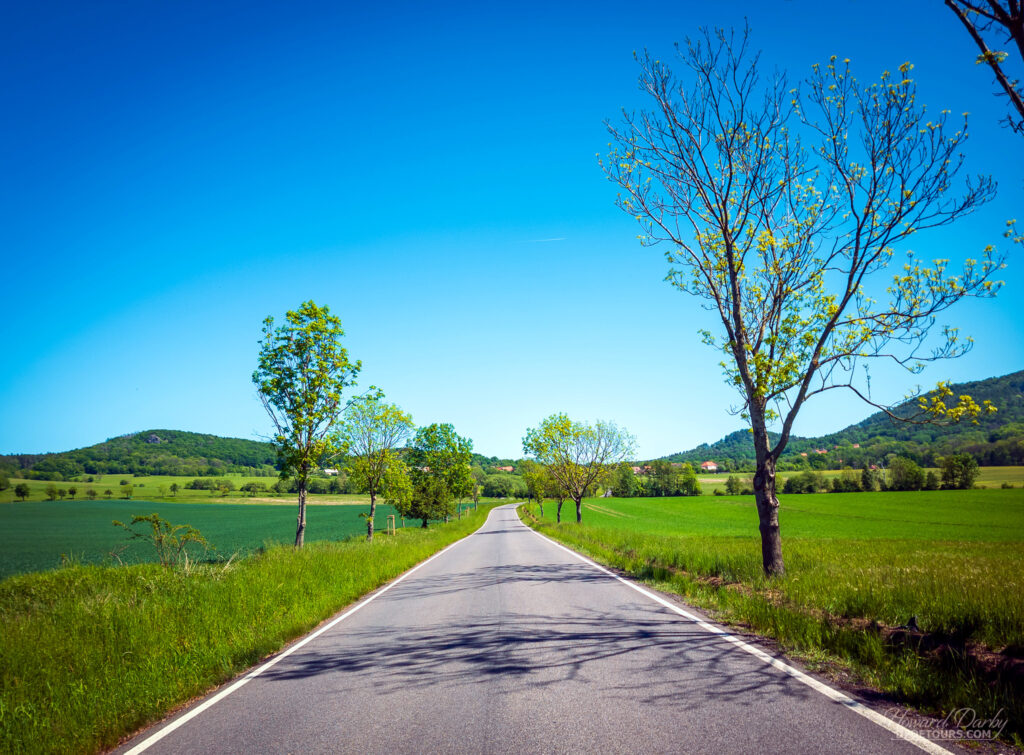
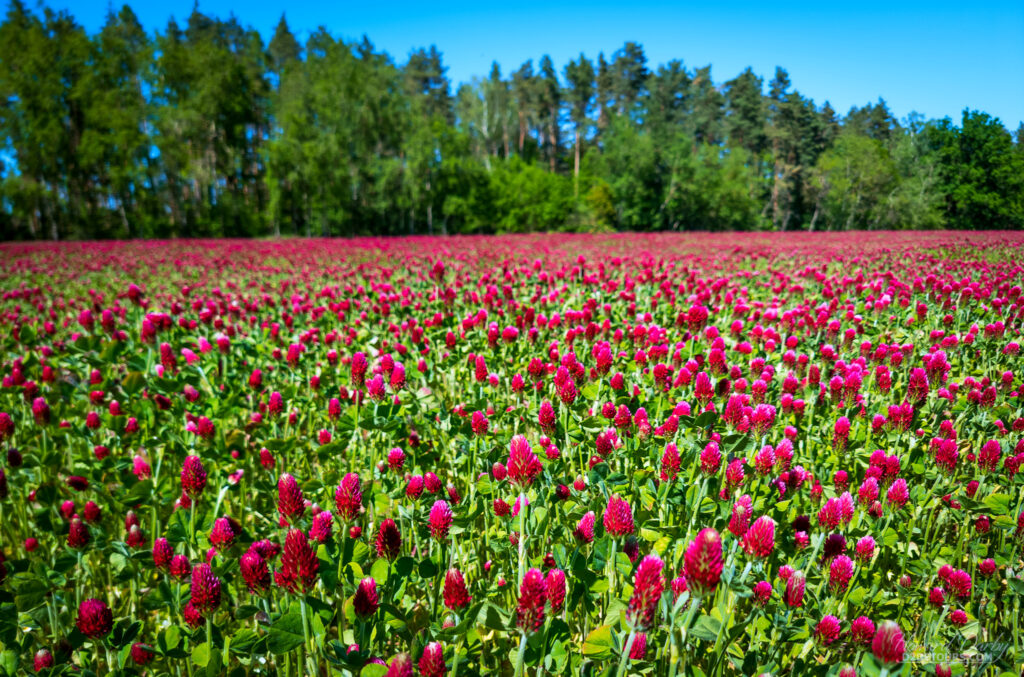
We thoroughly enjoyed exploring the countryside and townships around Terezin, finding all sorts of fascinating historical tidbits.
For reasons unknown more than 150 years ago a local artist carved faces into the rocks above the village of Želízy. Although erosion has softened their features, the nearly 9 meter / 30-foot-tall Certovy Hlavy (Devil Heads) still cast a menacing glare on the people below.
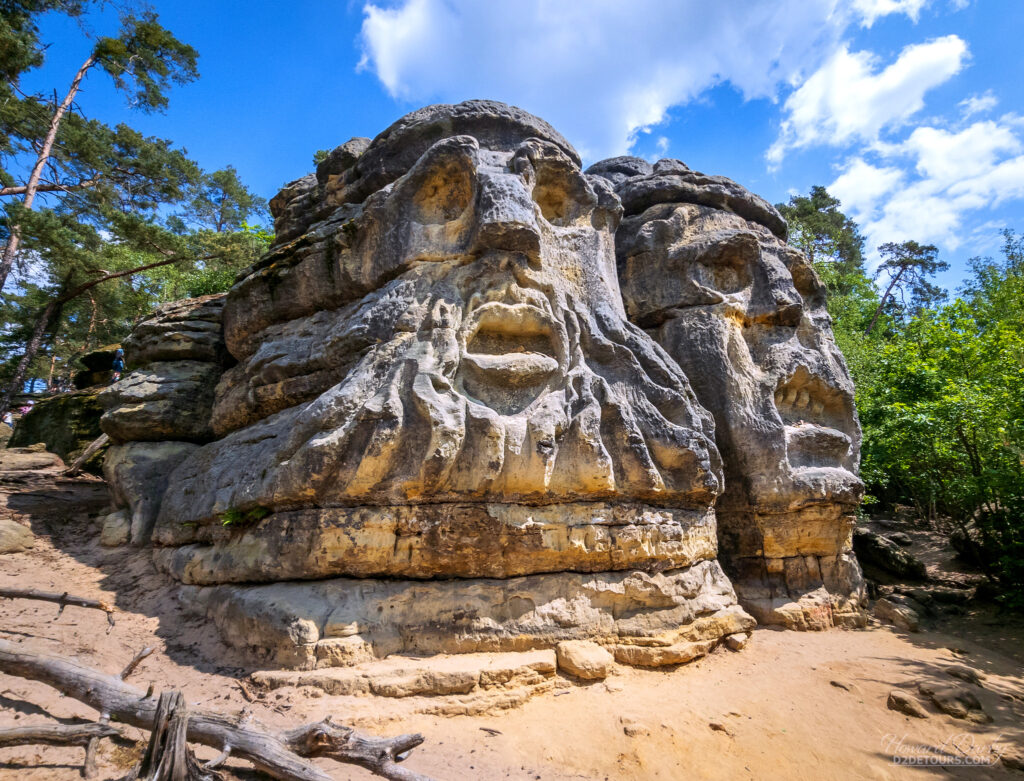
Near the city of Děčín, embedded in the bank of the Elbe River, is a Hunger Stone with the oldest legible carving dating from 1616. Hunger stones were harbingers of famine. Between the 15th and 19th centuries, these stones were embedded in river banks throughout central Europe as a warning that if the water level again dropped to this point, drought-induced famine would soon follow. The words carved into the Děčín stone are “Wenn du mich siehst, dann weine” – If you see me, then weep.
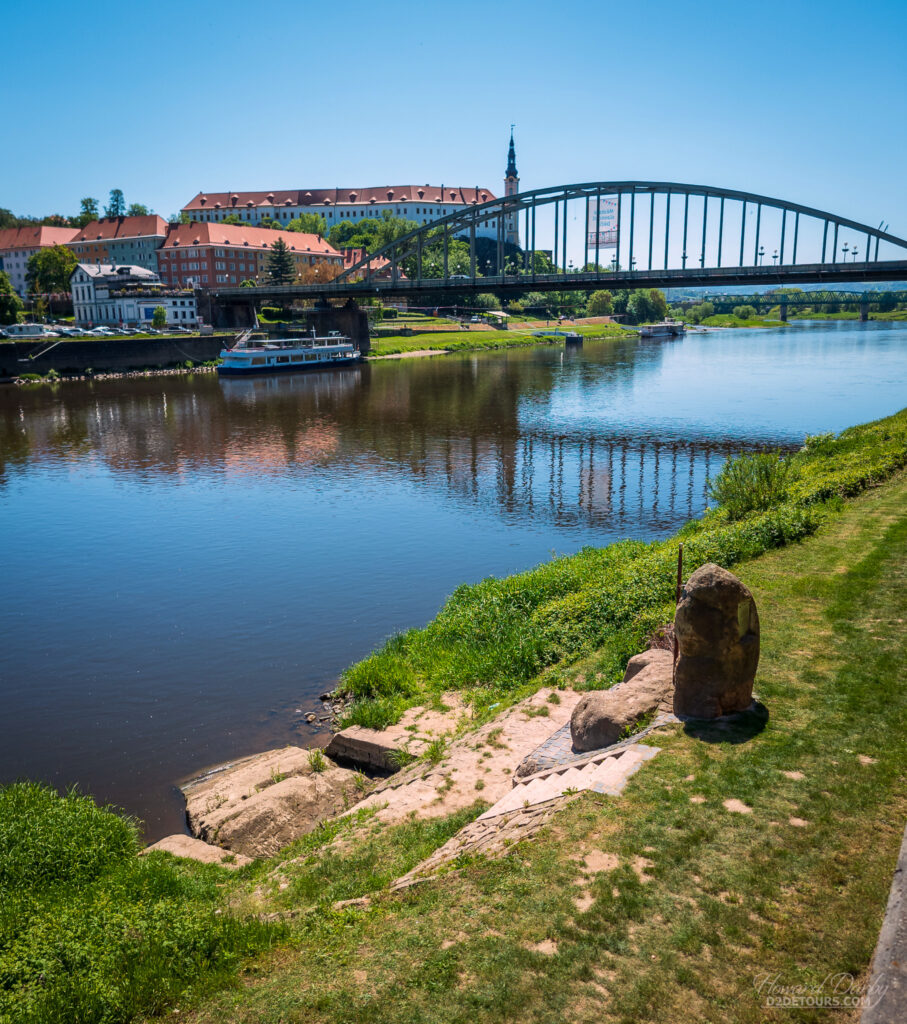
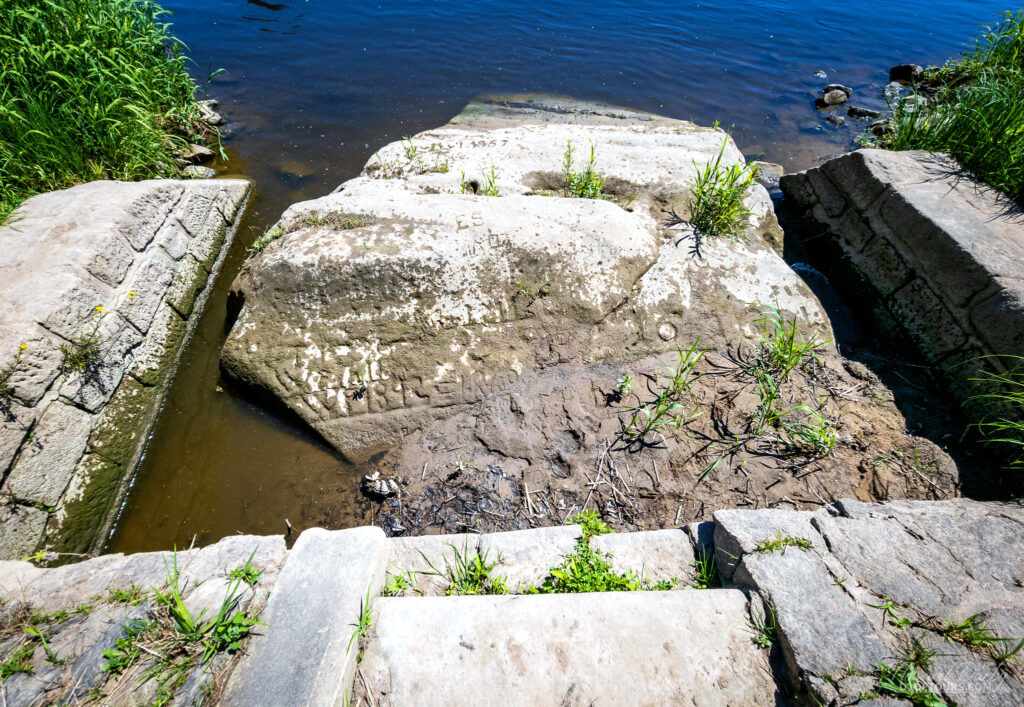
The Panská Skála (Lord’s Rock) are basalt columns that are believed to have emerged as a result of volcanic activity nearly 30 million years ago.
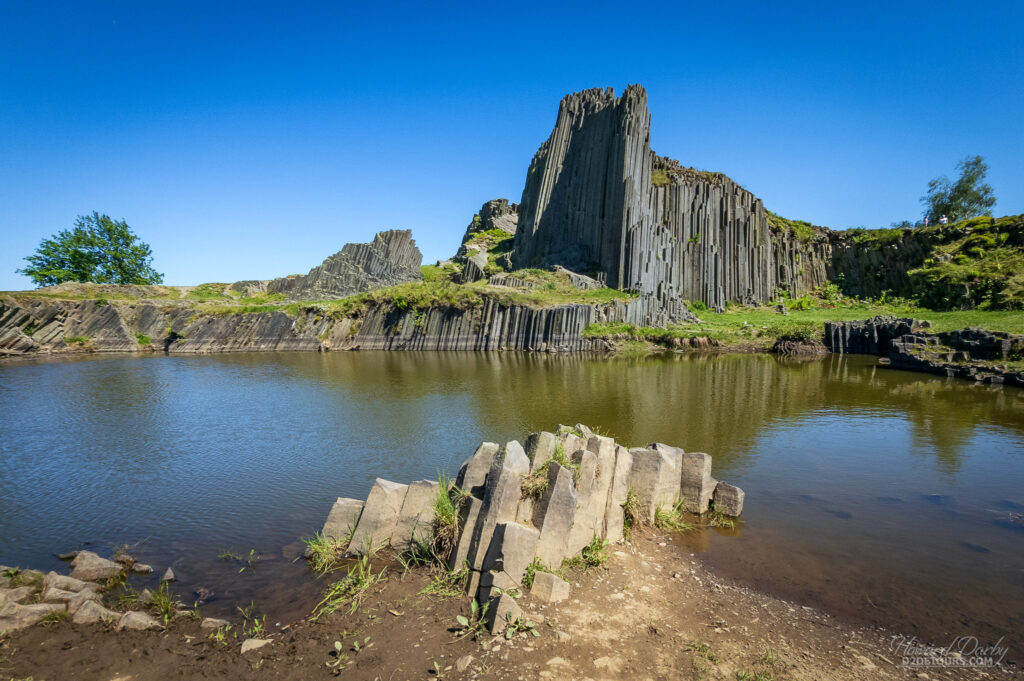
The columns soar upwards roughly 12 meters / 39 ft and are similar to the formations known as the Giant’s Causeway in Ireland and the Devil’s Postpile in California. The rock had been quarried for decades and although the Varhany (“pipe organs”), as the area is known colloquially, was declared a protected geological monument in 1895 that designation wasn’t much of a deterrent. It took the government actually purchasing the land in 1914 to finally put an end to excavations.
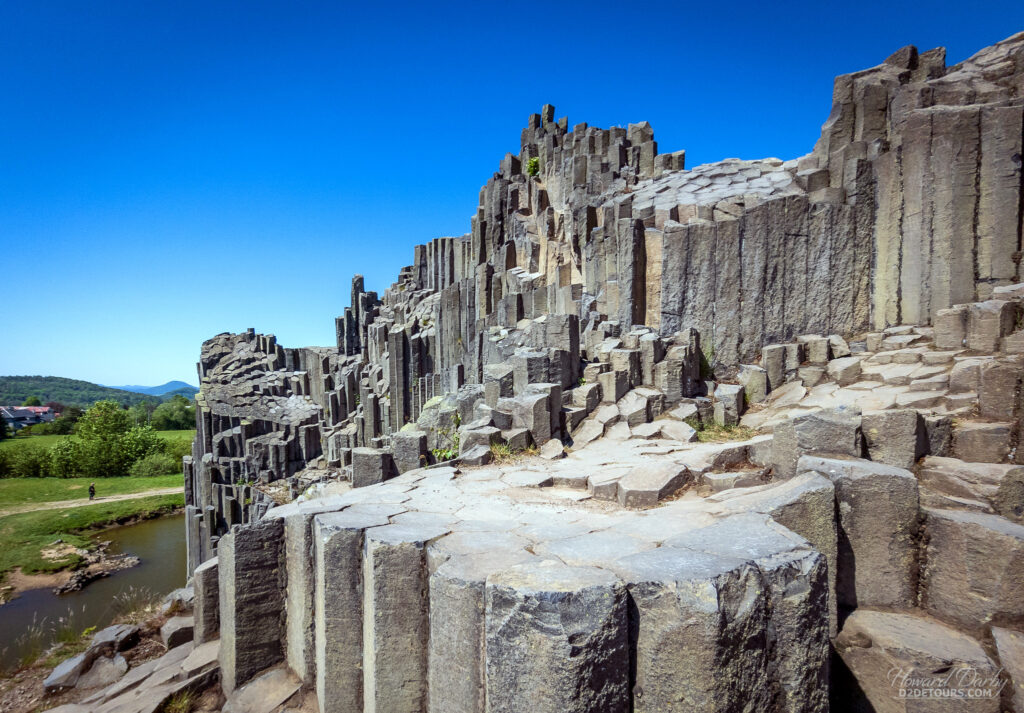
Although we didn’t stay in Prague we did have a chance to wander the city streets before we boarded an overnight train to Amsterdam. It is captivating and deserves more than an afternoon.
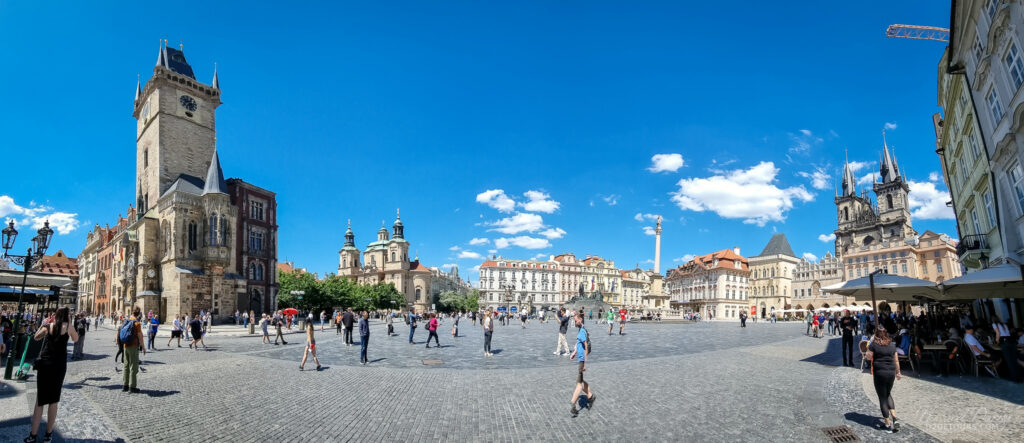
Wooden bridges had long been used to cross the River Vltava with the 12th century Judith Bridge, connecting Prague Castle with the Old Town, being particularly essential. A massive flood in 1342 caused irreparable damage to the bridge prompting King Charles IV to commission construction of a new stone bridge. Work began in 1357 and was completed over the next 50 years. The Karlův Most (Charles Bridge) is 520 meters / 1693 ft long and 10 meters / 33 ft wide; it was one of the wonders of the Middle Ages. There are thirty-three 18th-century statutes (all replicas) running the length of the bridge, each with a story to tell.
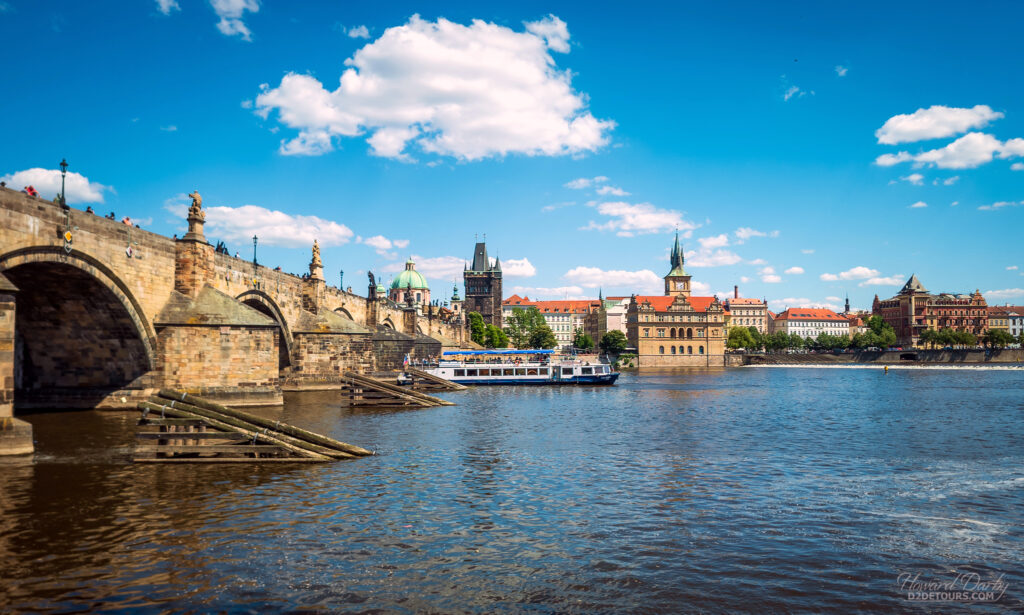
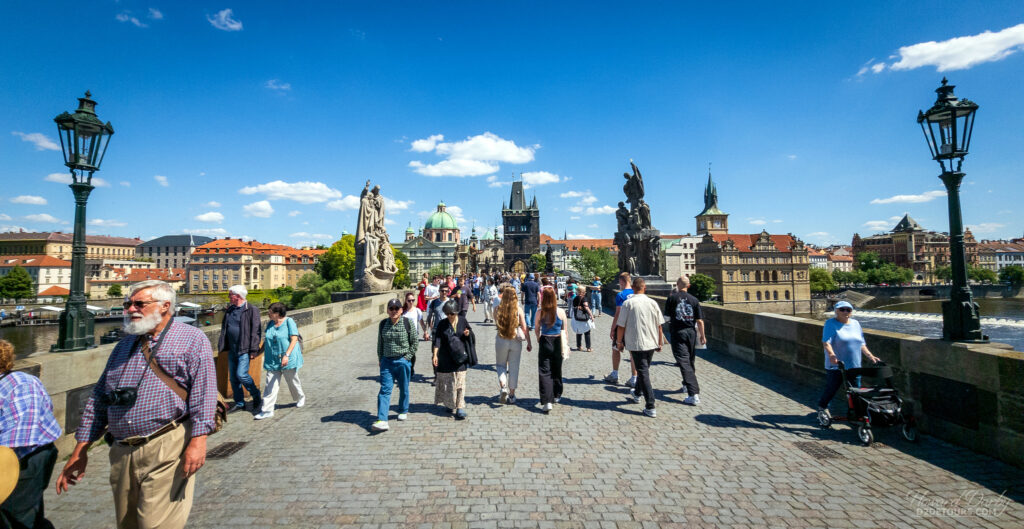
In the 12th century, the public marketplace was relocated from the banks of the River Vltava to its current location inland. The centuries-old buildings of the Old Town Square remained largely unscathed over the ensuing years, escaping both natural disaster and war. It is an eye-popping mixture of Art Nouveau, Gothic, Baroque, Rococo, Romanesque, and Renaissance architectural styles; totally mesmerizing.
Entering the Old Town Square your eyes are instantly drawn to the 80 meter / 262 ft tall towers capping the 15th century Church of Our Lady before Týn (Kostel Matky Boží Před Týnem). Supposedly this stunning Gothic church was the inspiration for the castle in Walt Disney’s “Sleeping Beauty.”
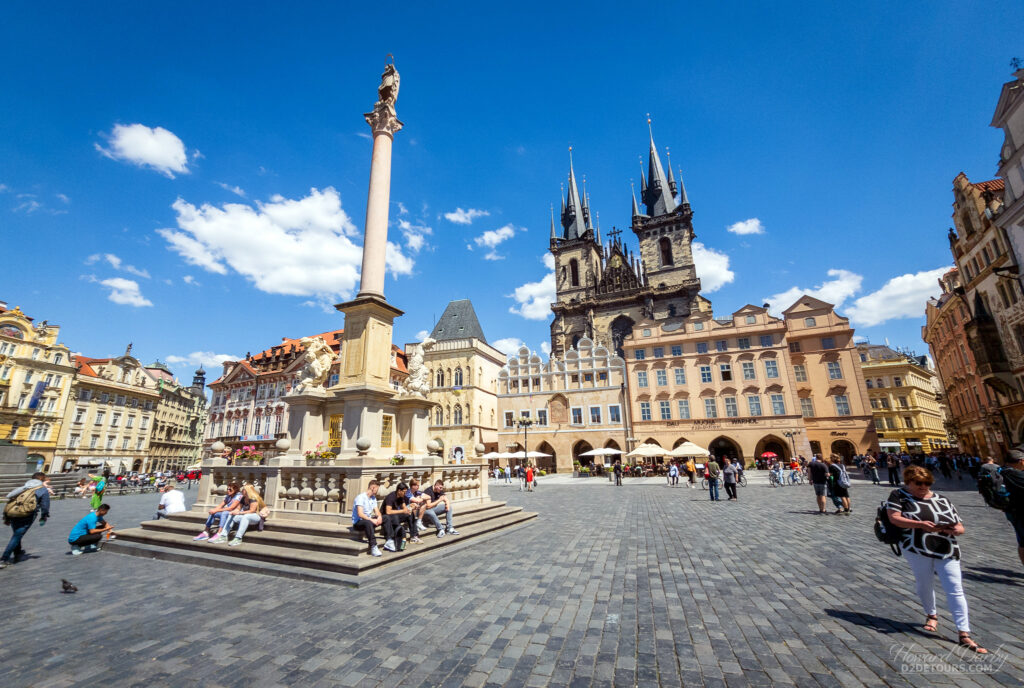
Prague’s Astronomical Clock is the third-oldest astronomical clock in the world and the oldest one still functioning. It displays Babylonian time, Old Bohemian time, German time, and Sidereal time, as well as incorporating Zodiac signs to depict the movements of the sun and moon. It was built in 1410 with wooden figurines added later in 1490. Legend says that once work on these new additions was completed the town councillors blinded the clockmaker to ensure that he could not recreate this masterpiece elsewhere. Each hour between 9 am and 11 pm these wooden figures are set in motion which attracts hordes of tourists on the sidewalk. We thought it was just as intriguing in its static state.
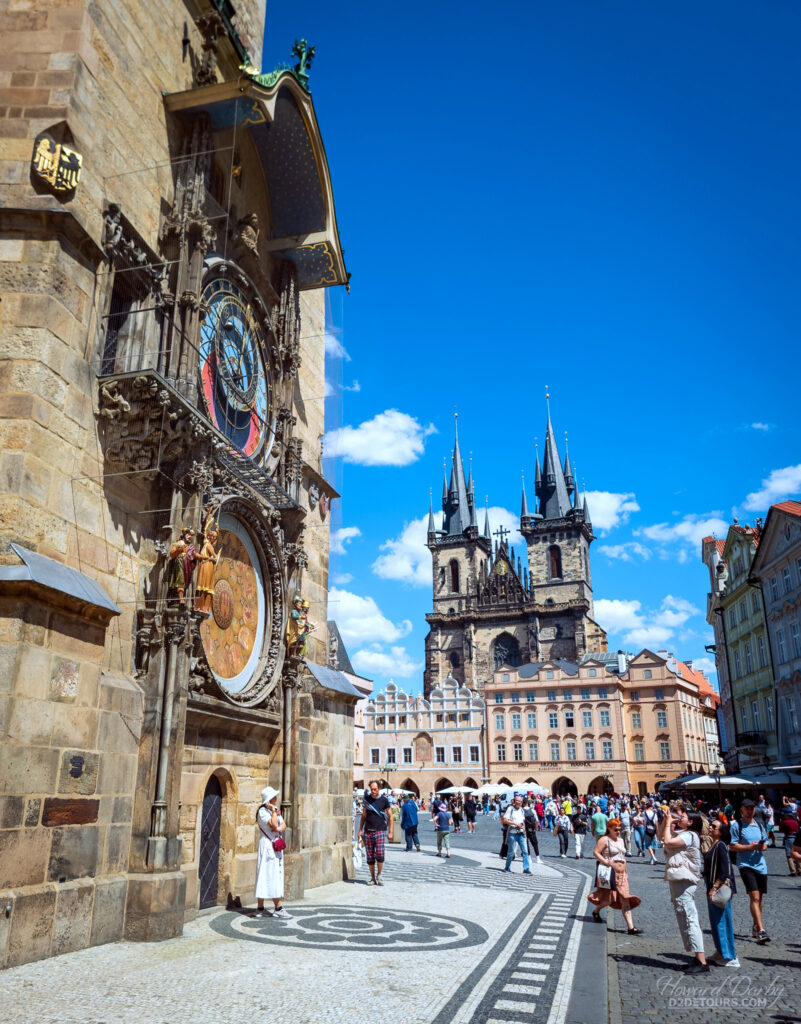
Wenceslas I , aka Václav the Good, was a Bohemian prince born in 907. Thirty-eight years later he was assassinated by his younger brother, Boleslaus the Cruel, in a power grab. Revered for his heroic virtue, Wenceslas was canonized three years after his death and posthumously declared a king. He is the patron saint of Bohemia and the square named in his honour has been the venue for many significant 20th century public demonstrations. Despite this venerated status, for reasons beyond my philistine understanding, the satirical sculpture of “King Wenceslas on a Dead Horse” by local artist David Černý hangs from the ceiling in the Lucerna mall, just down the street from Wenceslas Square.
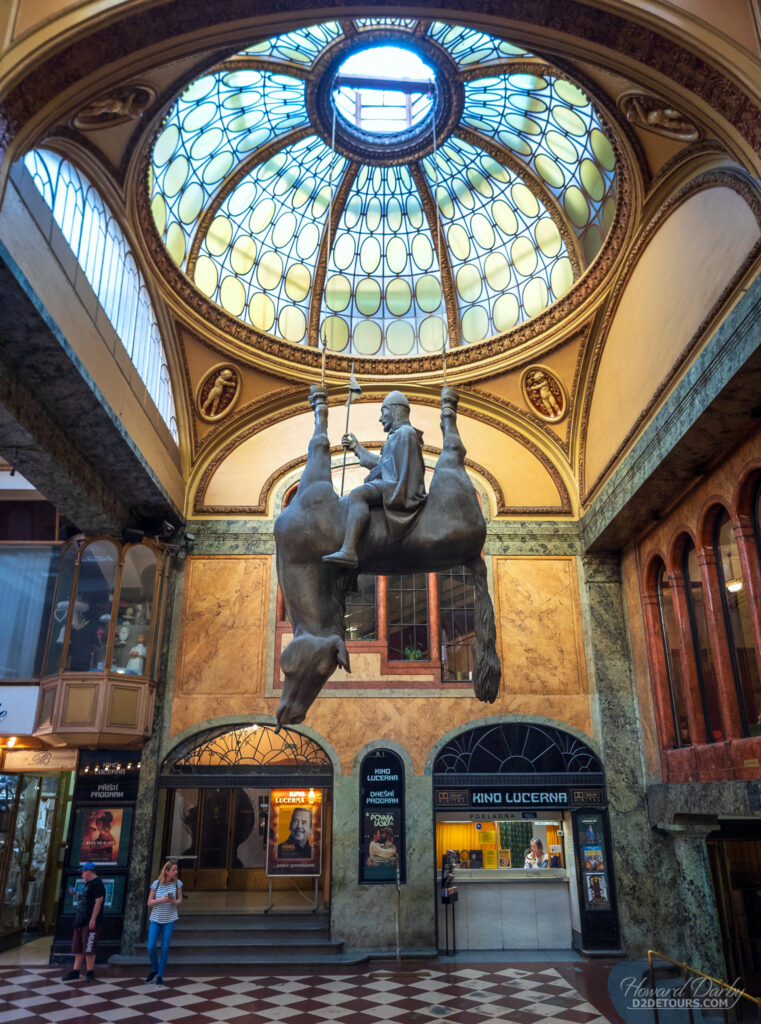
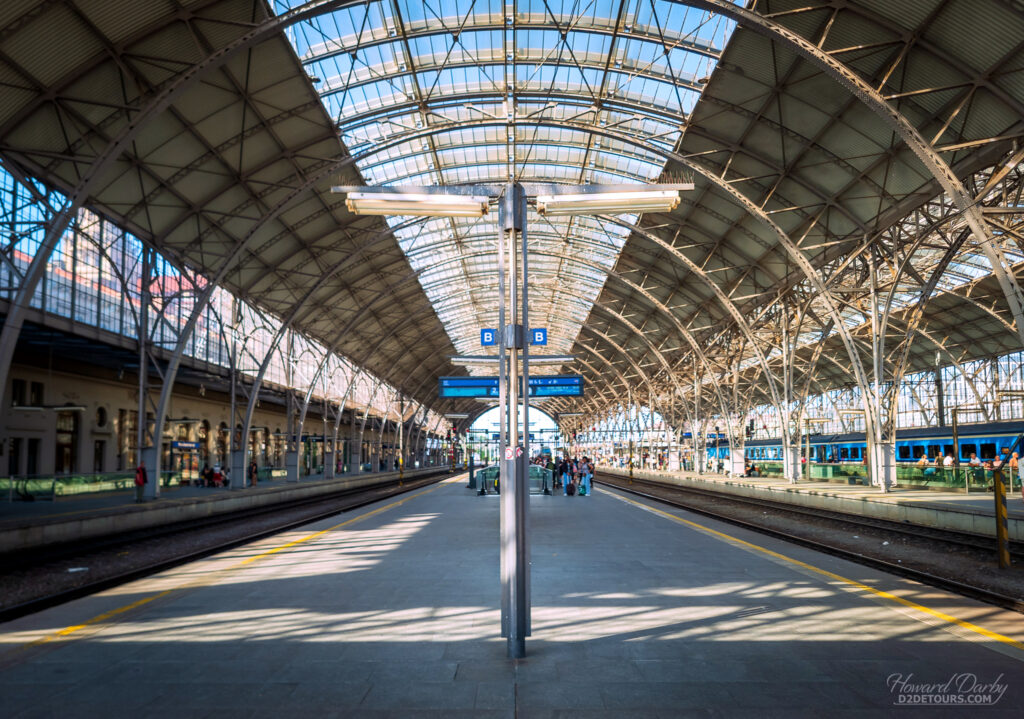
We left Prague on an overnight train – 12 hours to Amsterdam. We booked with a brand-new company, European Sleeper – their trains just started operating in March 2024. As the name implies, they offer private “coupés” which are sleeping compartments with a seat and table plus two bunk beds with proper mattresses, pillows, sheets, and duvets. A washbasin (toilets are shared and located at each end of the train car), toiletries and breakfast are also included. As nice as that sounds, it was a bit more than we wanted to spend. We decided to book a couchette.
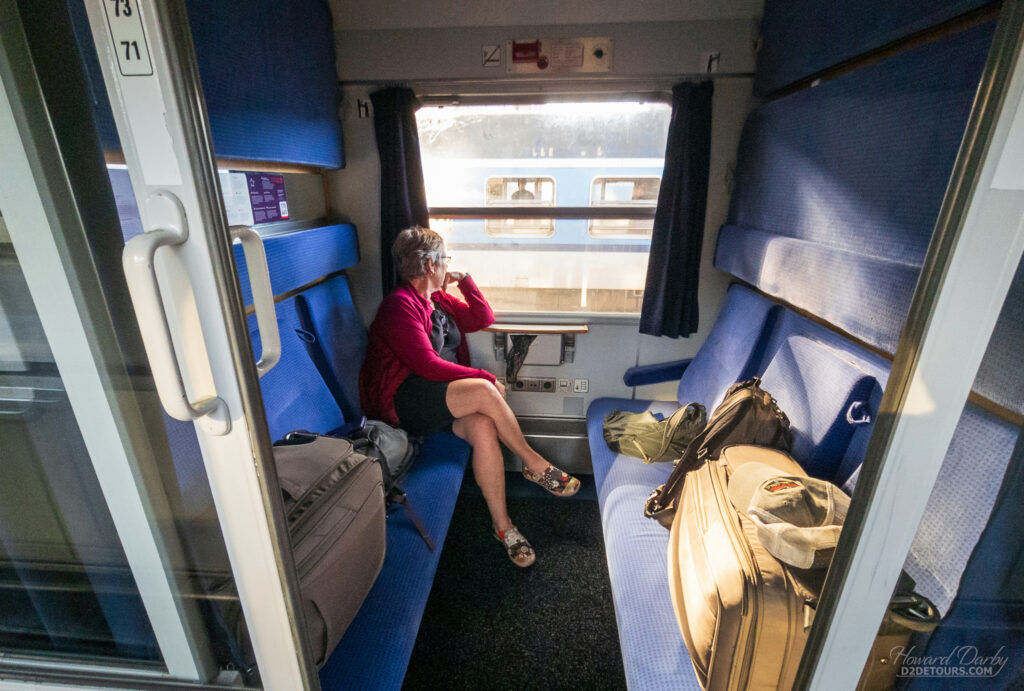
The couchette cabins are compartments with bench seats that convert to beds together with three bunks that fold out from the walls (again, toilets are shared). A sheet, pillow, and thin blanket are supplied along with a bottle of water. For very little money you could book a single seat in one of these compartments and sleep with strangers, or you have the option of booking all of the seats to create your own personal sleeper compartment. That’s what we did and it worked just great. Now we’re off on a 15-night cruise to the UK, Scotland, the Shetland Islands, Iceland, and Ireland!
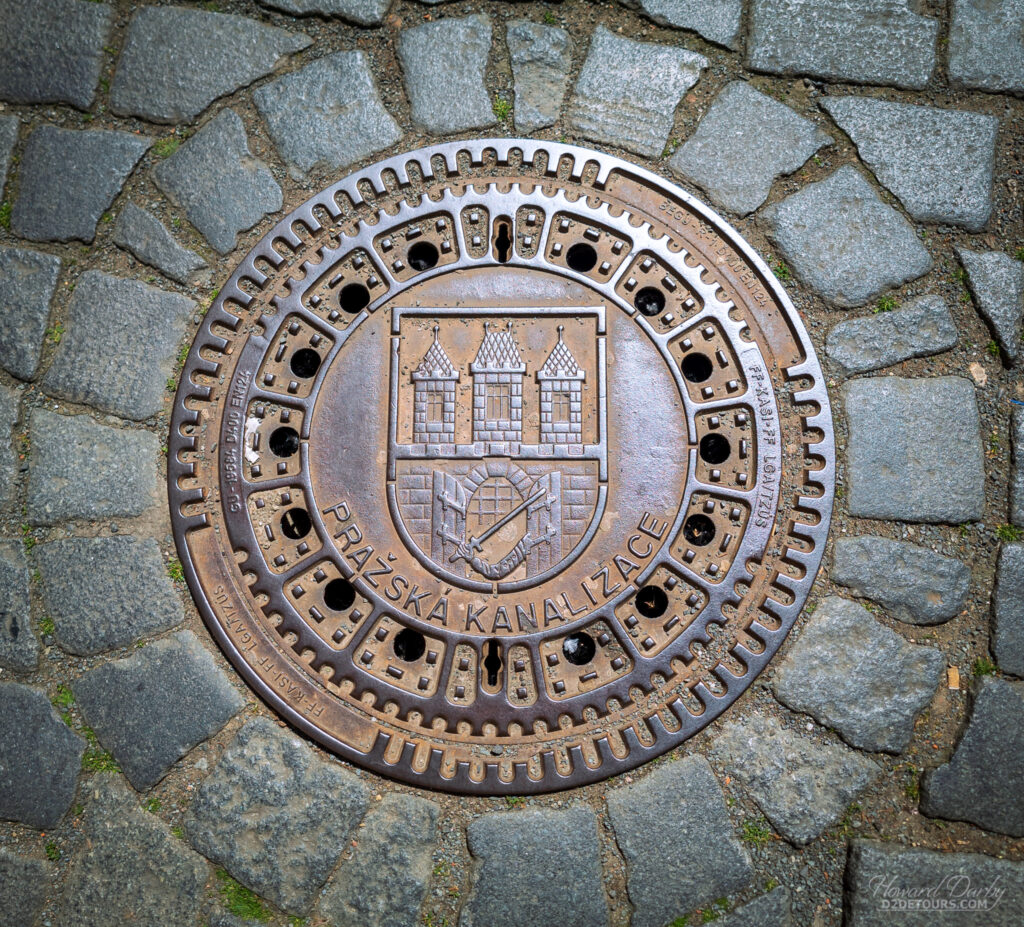
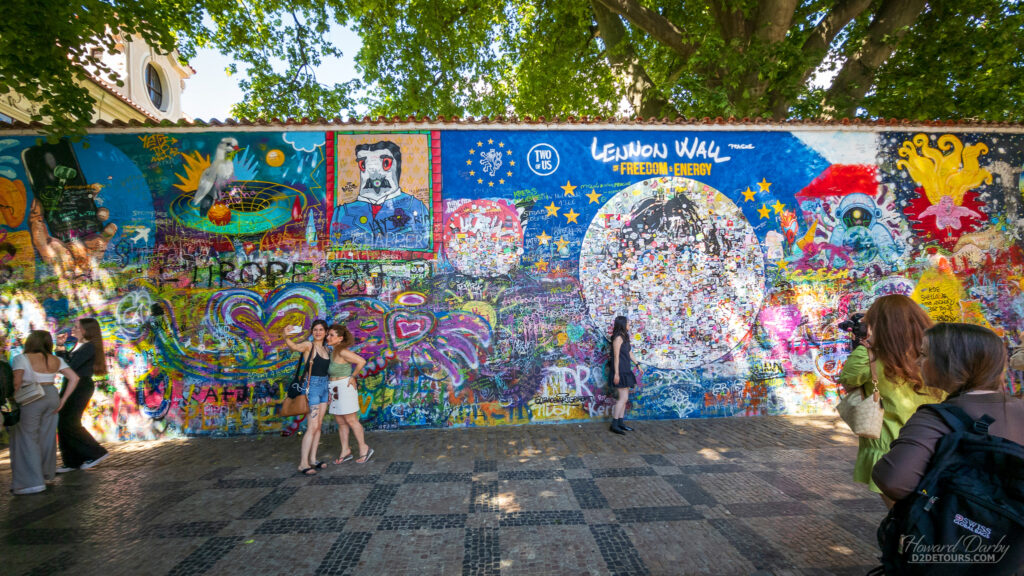
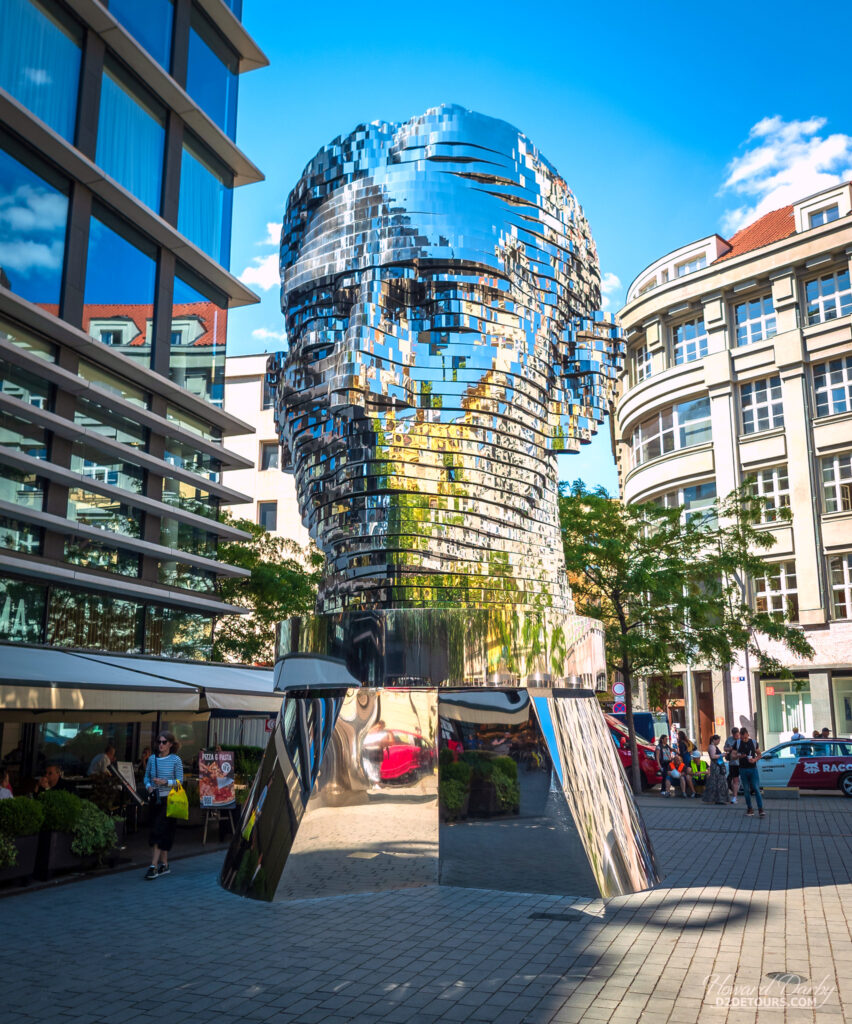

Beautiful pictures as always guys! Thanks for explaining the history of the area so well too. The rotating head looks identical to one in Charlotte, North Carolina.
Pingback: Europe by Car: Part One - D2 Detours